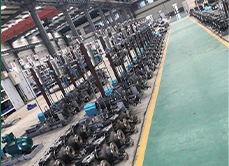Slovenian
- Afrikaans
- Albanian
- Amharic
- Arabic
- Armenian
- Azerbaijani
- Basque
- Belarusian
- Bengali
- Bosnian
- Bulgarian
- Catalan
- Cebuano
- Corsican
- Croatian
- Czech
- Danish
- Dutch
- English
- Esperanto
- Estonian
- Finnish
- French
- Frisian
- Galician
- Georgian
- German
- Greek
- Gujarati
- Haitian Creole
- hausa
- hawaiian
- Hebrew
- Hindi
- Miao
- Hungarian
- Icelandic
- igbo
- Indonesian
- irish
- Italian
- Japanese
- Javanese
- Kannada
- kazakh
- Khmer
- Rwandese
- Korean
- Kurdish
- Kyrgyz
- Lao
- Latin
- Latvian
- Lithuanian
- Luxembourgish
- Macedonian
- Malgashi
- Malay
- Malayalam
- Maltese
- Maori
- Marathi
- Mongolian
- Myanmar
- Nepali
- Norwegian
- Norwegian
- Occitan
- Pashto
- Persian
- Polish
- Portuguese
- Punjabi
- Romanian
- Russian
- Samoan
- Scottish Gaelic
- Serbian
- Sesotho
- Shona
- Sindhi
- Sinhala
- Slovak
- Slovenian
- Somali
- Spanish
- Sundanese
- Swahili
- Swedish
- Tagalog
- Tajik
- Tamil
- Tatar
- Telugu
- Thai
- Turkish
- Turkmen
- Ukrainian
- Urdu
- Uighur
- Uzbek
- Vietnamese
- Welsh
- Bantu
- Yiddish
- Yoruba
- Zulu
Telephone: +86 13120555503
Email: frank@cypump.com
Sep . 29, 2024 06:17 Back to list
Designing Efficient Pipeline and Pump Stations for Optimal Performance and Reliability
Pipeline Pump Station Design Essential Considerations and Best Practices
Pipeline pump stations play a critical role in the transportation of fluids, whether it be water, oil, or other liquids across various distances. The design of these facilities must be meticulously planned to ensure efficiency, safety, and environmental compliance. This article outlines essential considerations and best practices for pipeline pump station design.
At the core of any pump station design is a thorough understanding of the fluid being transported. Different liquids possess unique properties, including viscosity, density, and corrosiveness, which directly affect pump selection and station configuration. For instance, crude oil requires a different approach compared to clean water. Designers must choose pumps that not only handle the specific fluid characteristics but also operate effectively within the anticipated flow rates and pressures.
Pipeline Pump Station Design Essential Considerations and Best Practices
Once the site is selected, the design must address hydraulic design principles. This includes calculating the required pump head, assessing the pipeline layout, and ensuring adequate surge protection. Surge pressures can lead to pipe bursts or system failures; therefore, surge analysis is critical. Designers should incorporate surge tanks or air relief valves to mitigate these risks.
pipeline pump station design

Moreover, a reliable power supply is vital for the continuous operation of pump stations. The design should include backup power options, such as generators, to ensure functionality during outages. Energy efficiency is also a growing concern. Implementing variable frequency drives (VFDs) can help optimize pump performance and reduce energy consumption, which is crucial for long-term sustainability.
Safety is paramount in the design of pipeline pump stations. Compliance with industry standards and government regulations is essential to protect both workers and the environment. This includes implementing proper safety measures, such as emergency shutdown systems, fire suppression systems, and spill containment strategies. Training for operation and emergency procedures should also be an integral part of the planning process.
Finally, future scalability and technology integration should be considered in the design phase. As demand for the transported fluid may change, the design should allow for the potential addition of pumps or ancillary systems. Furthermore, modern technologies, like remote monitoring and automated control systems, can enhance operational efficiency and provide real-time data for decision-making.
In conclusion, the design of pipeline pump stations is a complex process requiring careful consideration of various technical, environmental, and safety factors. By adhering to best practices and leveraging advanced technologies, engineers can create efficient, safe, and sustainable pump stations that meet the demands of fluid transportation systems. As the industry continues to evolve, so too should the approaches to pump station design, ensuring they remain effective in an ever-changing landscape.
-
ISG Series Vertical Pipeline Pump - Chi Yuan Pumps Co., LTD.|High Efficiency, Energy Saving, Low Noise
NewsJul.30,2025
-
ISG Series Vertical Pipeline Pump- Chi Yuan Pumps|High Efficiency&Low Noise
NewsJul.30,2025
-
ISG Series Vertical Pipeline Pump-Chi Yuan Pumps Co., LTD.|High Efficiency&Energy Conservation
NewsJul.30,2025
-
ISG Series Vertical Pipeline Pump - Chi Yuan Pumps Co., LTD.|Advanced Hydraulic Design&Energy-Efficient Solutions
NewsJul.30,2025
-
ISG Series Vertical Pipeline Pump - Chi Yuan Pumps Co., LTD.
NewsJul.30,2025
-
ISG Series Vertical Pipeline Pump - Chi Yuan Pumps Co., LTD.|energy-efficient fluid handling&industrial durability
NewsJul.30,2025










